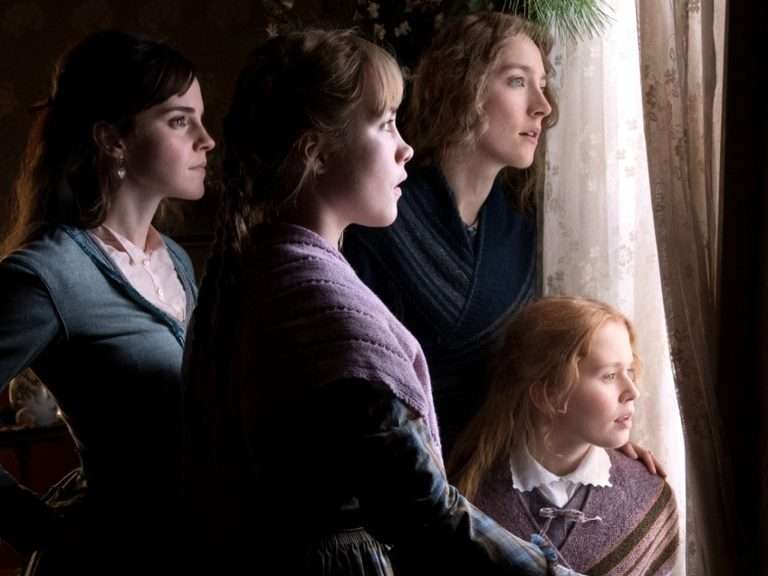This article contains spoilers for Pan’s Labyrinth (2006) and Tigers are not afraid (2017)
Adapting a book is never an easy task: a filmmaker has to stay faithful to the spirit of the original work while making the most of the tools offered by cinema. Besides, not all books are created equal: if some literary genres can be called “hard to adapt,” magical realism is definitely one of them. Closely associated with Latin American literature and its “boom” in the 1960s and 1970s, it treads the fine line between fantastical events and the (often grim) everyday. Magical realism is still alive and well today, but many of its most important books have yet to be adapted on screen. One of them is Gabriel Garcia Marquez’s One Hundred Years of Solitude, a classic published in 1964, which centers on the decaying Buendia family, who lives in the fictional Colombian town of Macondo.
This unique novel could soon hit the (small) screen for the first time: Netflix acquired the rights to One Hundred Years of Solitude, announcing a new project in 2019. A series is now in active development – it even has its own page on the platform’s website. Adapting this massive family saga, which features improbable rains, human pigs, and magical disappearances, will be difficult, and little has been revealed about the actual development of the script, which will be written in Spanish. Other films in the same language have successfully drawn on magical realism, and they thus could provide some inspiration for the makers of One Hundred Years of Solitude. Two of them deserve a special reappraisal: they are not adaptations but do share a creepy tone and a fascinating discussion of family.
The first is Pan’s Labyrinth, Guillermo Del Toro’s 2006 masterpiece. Set in Spain during the Civil War, the film follows Ofelia (Ivana Baquero), a young girl who is forced to move in with her cruel Francoist stepfather, Vidal (Sergi Lopez). In this grim universe that looms closer, Ofelia escapes to a world of fairies and monsters, where she knows she belongs. Pan’s Labyrinth is more than a movie; it is a cinematic experience. The film is visually stunning, perfectly shot and acted, and its plot is simple and efficient. Whether Ofelia’s fantasies are real or imaginary is deliberately left unclear, and as befits magical realism, not all of the creatures she encounters are friendly. One child-eating monster in particular, the Pale Man, reportedly scared Stephen King himself.
The movie discusses many themes – innocence, disobedience, trust, and family. Ofelia puts the safety of her baby brother higher than her own. At the same time, the covert resistant fighter and housekeeper Mercedes (Maribel Verdu) goes out of her way to protect and care for the little girl she just met. On the other side of the spectrum, Ofelia’s biological mother, Carmen (Arianna Gil), is too weak and sick with her pregnancy to really tend to her daughter, while Vidal only wants a son to keep his name alive and completely disregards children’s wellbeing.
In Pan’s Labyrinth, family as a concept is destroyed, rebuilt (as Ofelia and Mercedes get closer), and tested by both the real and imaginary worlds. The little girl dreams of finding her true parents in a fantastical kingdom but has to let go of her Earthly ties beforehand.
The film achieved the success it deserved, even getting a 22-minute-long standing ovation at the Cannes festival, but another gem, which is not as well known, also uses magical realism to push the boundaries of reality – and family. This is Tigers are Not Afraid, a beautiful 2017 movie by Mexican filmmaker Issa López. It follows Estrella (Paola Lara), a young girl trying to grow up in a city torn by the drug war. After her mother goes missing – possibly killed by a cartel – Estrella befriends some orphans living on the street, including the resourceful Shine (Juan Ramón López). Together, they attempt to survive, and Estrella sets out to find her mother, crossing paths with sociopathic gang leader El Chino (Tenoch Huerta) on her way. Despite some slightly odd visual effects, the movie remains beautifully shot and filled with innovative – and sometimes stunning – creative ideas.

Of course, the young girl’s journey is filled with magical encounters, starting with strange chalk that seems to grant her deepest wishes. The film brilliantly mixes magical realism with horror, and its contemporary setting makes the creepy creatures even more bloodcurdling than in Pan’s Labyrinth. Tigers are not afraid is just as poignant and well-written, and seeing its young heroine try to find solace in her inner world feels heart-wrenching. Much like in Del Toro’s masterpiece, here, the boundaries between magic and reality are deliberately blurred, but the film’s focus on family is conversely very clear.
Estrella tries to rebuild a life outside of her home, and the movie perfectly illustrates how children can recreate attachments even in the darkest circumstances. The street orphans’ interactions and their relationship become especially important in a world where adults have come to symbolize a threat. Family (re)building and survival are deeply intertwined in Tigers Are Not Afraid. Its ending, which sees Estrella being comforted by her dead mother, symbolizes the importance of transmission in magical realism – a theme constantly evoked throughout One Hundred Years of Solitude.
Adapting Garcia Marquez’s literary masterpiece will prove a great challenge. Still, films like Pan’s Labyrinth and Tigers are not afraid prove that magical realism can be transposed successfully onto the screen. This is especially true when the movies involve Latin American filmmakers and evoke universal themes – like family. The directors know how to blur the frontiers between imaginary and real in order to create a world where fantasy is both a much-needed escape and a terrifying threat. The Netflix adaptation of One Hundred Years of Solitude will hopefully draw from these movies to give the novel the memorable adaptation it deserves.
Read More:
The Magical Realism of Pan’s Labyrinth & The Redefinition of Reality
The Beginning of the End in Bruno Dumont’s ‘Twentynine Palms’
How ’28 Days Later’ Revitalized The Zombie Film


![The Third Murder [2018]: ‘NYAFF’ Review](https://79468c92.delivery.rocketcdn.me/wp-content/uploads/2018/06/The_Third_Murder_NYAFF_HOF_1-768x512.jpeg)
![Paddington 2 [2018] Review: A Cuddly, Cushy & Comfortable Bear Hug For Anyone & Everyone](https://79468c92.delivery.rocketcdn.me/wp-content/uploads/2018/12/paddington-2-screenshot-1-768x320.png)


